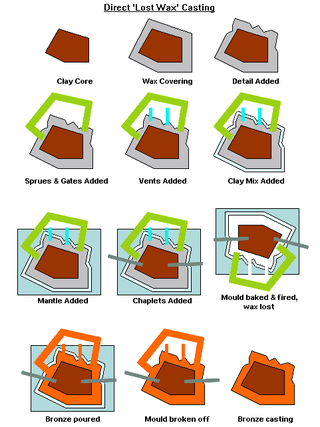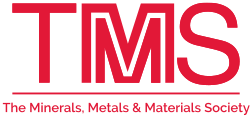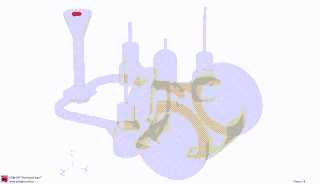Related Research Articles

Metallurgy is a domain of materials science and engineering that studies the physical and chemical behavior of metallic elements, their inter-metallic compounds, and their mixtures, which are known as alloys.

Wrought iron is an iron alloy with a very low carbon content in contrast to that of cast iron. It is a semi-fused mass of iron with fibrous slag inclusions, which give it a wood-like "grain" that is visible when it is etched, rusted, or bent to failure. Wrought iron is tough, malleable, ductile, corrosion resistant, and easily forge welded, but is more difficult to weld electrically.

A blast furnace is a type of metallurgical furnace used for smelting to produce industrial metals, generally pig iron, but also others such as lead or copper. Blast refers to the combustion air being supplied above atmospheric pressure.

Cyril Stanley Smith was a British metallurgist and historian of science. He is most famous for his work on the Manhattan Project where he was responsible for the production of fissionable metals. A graduate of the University of Birmingham and Massachusetts Institute of Technology (MIT), Smith worked for many years as a research metallurgist at the American Brass Company. During World War II he worked in the Chemical-Metallurgical Division of the Los Alamos Laboratory, where he purified, cast and shaped uranium-235 and plutonium, a metal hitherto available only in microgram amounts, and whose properties were largely unknown. After the war he served on the Atomic Energy Commission's influential General Advisory Committee, and the President's Science Advisory Committee.

Lost-wax casting – also called investment casting, precision casting, or cire perdue – is the process by which a duplicate sculpture is cast from an original sculpture. Intricate works can be achieved by this method.
The American Institute of Mining, Metallurgical, and Petroleum Engineers (AIME) is a professional association for mining and metallurgy, with over 145,000 members. The association was founded in 1871 by 22 mining engineers in Wilkes-Barre, Pennsylvania, and was one of the first national engineering societies in the country.

The Minerals, Metals & Materials Society (TMS) is a professional organization for materials scientists and engineers that encompasses the entire range of materials and engineering, from minerals processing and primary metals production to basic research and the advanced applications of materials.
Defence Metallurgical Research Laboratory (DMRL) is a research laboratory of the Defence Research and Development Organisation (DRDO). Located in Defence Research Complex, Kanchanbagh, Hyderabad. It is responsible for the development and manufacture of complex metals and materials required for modern warfare and weapon systems.

Casting is a manufacturing process in which a liquid material is usually poured into a mold, which contains a hollow cavity of the desired shape, and then allowed to solidify. The solidified part is also known as a casting, which is ejected or broken out of the mold to complete the process. Casting materials are usually metals or various time setting materials that cure after mixing two or more components together; examples are epoxy, concrete, plaster and clay. Casting is most often used for making complex shapes that would be otherwise difficult or uneconomical to make by other methods. Heavy equipment like machine tool beds, ships' propellers, etc. can be cast easily in the required size, rather than fabricating by joining several small pieces. Casting is a 7,000-year-old process. The oldest surviving casting is a copper frog from 3200 BC.

Thomas Turner Sc., A.R.S.M., F.R.I.C. was the first Professor of Metallurgy in Britain, at the University of Birmingham. The University was created in 1900 and the department founded in 1902. He was instrumental in the early development of the sclerometer for testing hardness of metals. He retired in 1926. He was also a leading member of the Christadelphian church.
Palle Rama Rao FREng is an Indian scientist noted for his contribution to the field of Physical and Mechanical Metallurgy. He has collaborated and conducted research activities for over dozen universities and associations all over India and abroad. He has been honoured with the titles of Padma Vibhushan in 2011 by president of India for his contributions to scientific community. He is acting as the chairman, Governing Council, International Advanced Research Centre for Powder Metallurgy & New Materials (ARCI), Hyderabad.
(Ivor) Rex Harris FREng FIMMM FInstP was a British academic.
Mark F. Horstemeyer is the Dean of the School of Engineering at Liberty University. He was the Giles Distinguished Professor at Mississippi State University (MSU) and professor in the Mechanical Engineering Department at Mississippi State University (2002–2018), holding a Chair position for the Center for Advanced Vehicular Systems (CAVS) in Computational Solid Mechanics; he was also the Chief Technical Officer for CAVS. Before coming to MSU, he worked for Sandia National Laboratories for fifteen years (1987-2002) in the area of multiscale modeling for design.
Bhakta B. Rath is an Indian American material physicist and head of the Materials Science and Component Technology of the United States Naval Research Laboratory (NRL), the corporate research laboratory for the United States Navy and the United States Marine Corps. He is the chief administrative officer for program planning, interdisciplinary coordination, supervision and control of research and is the associate director of research for Materials Science and Component Technology at NRL.
Budaraju Srinivasa Murty is an Indian metallurgical engineer. He was awarded the Shanti Swarup Bhatnagar Prize for Science and Technology, the highest science award in India, for the year 2007 in engineering science category. From August 2019 he serves as the Director of Indian Institute of Technology Hyderabad, NIT Andhra Pradesh from 14 February 2024 and he was also director of IIIT Raichur till November 2024. Prior to that he was head of department at Indian Institute of Technology Madras and professor at Indian Institute of Technology Kharagpur.

Boris Nikolaevich Poliakov is a Russian scientist, professor of Mechanical Engineering, and member of the Academy of Engineering Sciences of the Russian Federation.
Dan J. Thoma is an American metallurgist who is a Professor in the Department of Materials Science and Engineering at the University of Wisconsin–Madison. He is the director of the Grainger Institute for Engineering at the University of Wisconsin–Madison. Thoma is also a past President of the American Institute of Mining, Metallurgical, and Petroleum Engineers (AIME). Thoma is well-known for his research on 3D printing technology, which he has carried out for over two decades.

Somnath Ghosh is the Michael G. Callas Chair Professor in the Department of Civil & Systems Engineering and a Professor of Mechanical Engineering and Materials Science & Engineering at Johns Hopkins University (JHU). He is the founding director of the JHU Center for Integrated Structure-Materials Modeling and Simulation (CISMMS) and was the director of an Air Force Center of Excellence in Integrated Materials Modeling (CEIMM). Prior to his appointment at JHU, Ghosh was the John B. Nordholt Professor of Mechanical Engineering and Materials Science & Engineering at Ohio State University. He is a fellow of several professional societies, including the American Association for the Advancement of Science (AAAS).
Rebecca "Becky" Hall Sparling, P.E. was an American materials engineer and registered mechanical engineer in the manufacturing, automotive, and aerospace industries from the 1930s to the late 1960s, who had "established a nation-wide reputation as a metallurgist". Often working on classified projects, Sparling advanced the field of metallurgy in severe environments and developed non-destructive engineering test methods, especially in brittle, high-strength, or specialized materials.

Casting process simulation is a computational technique used in industry and metallurgy to model and analyze the metal-casting process. This technology allows engineers to predict and visualize the flow of molten metal, crystallization patterns, and potential defects in the casting before the start of the actual production process. By simulating the casting process, manufacturers can optimize mold design, reduce material consumption, and improve the quality of the final product.
References
- ↑ Jade Davenport. "CME Foundry". Engineeringnews.co.za. Retrieved 14 August 2011.
- ↑ Center of Excellence for Advanced Materials and Processings, Iran University of Science and Technology. Retrieved August 2011
- 1 2 "Metallurgical and Materials Transactions B, Volume 37, Number 6". Metallurgical and Materials Transactions B. 37. SpringerLink: 855. doi:10.1007/BF02735005. S2CID 137338522.
- ↑ "Chairs". Times Higher Education. 20 March 1998. Retrieved 14 August 2011.
- ↑ "Institute of Cast Metals Engineers | ICME Awards". Icme.org.uk. Retrieved 14 August 2011.